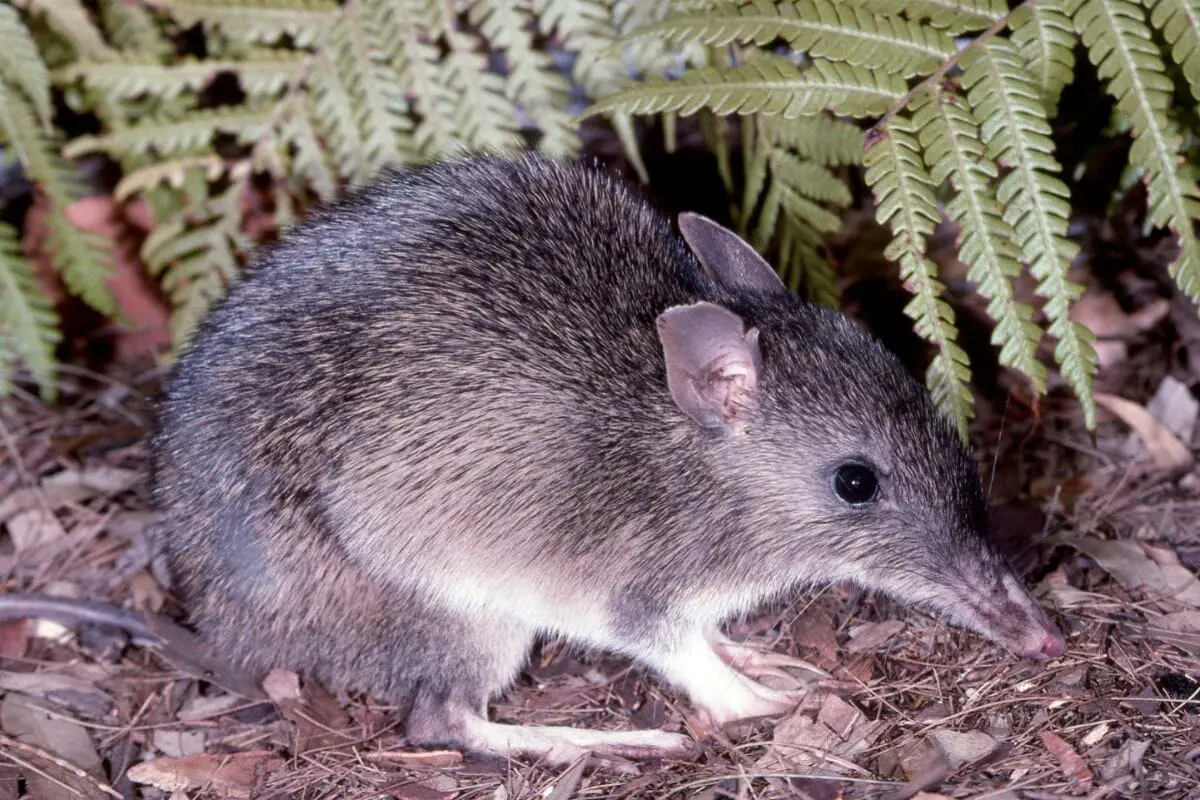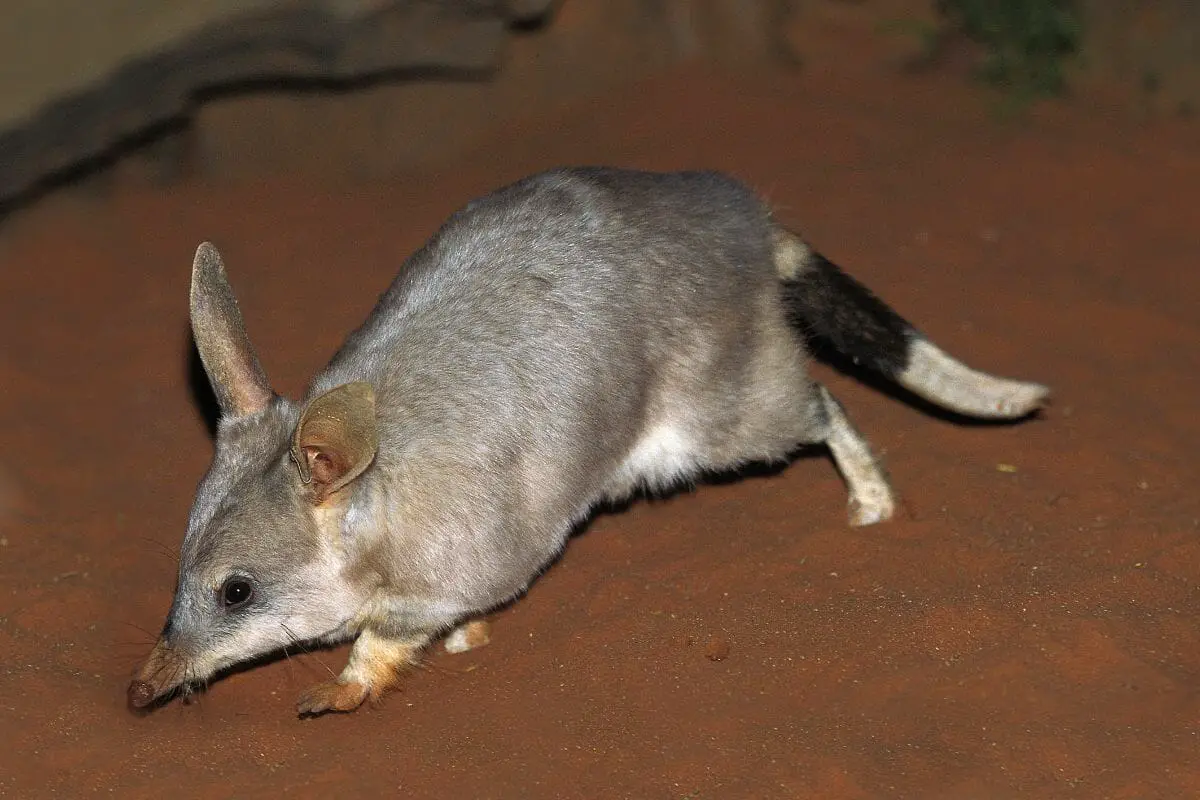Bandicoots and bilbies often cause a mix-up. They look alike and roam the vast landscapes of Australia, but there are crucial differences between these small creatures.
Understanding these differences is key, especially for those interested in Australian wildlife or involved in conservation efforts.
In this post, we’ll look at what makes each animal unique. From their appearances to their habits and habitats, we’ll cover all you need to know.
Whether you’re a student, a nature enthusiast, or just curious, our breakdown will help you identify and appreciate these fascinating marsupials.

What Is A Bandicoot?
Bandicoot is actually the name derived from the term ‘pandi-kokku’ which means ‘pig-rat’ in Telugu, and that isn’t a far-off description of what these animals actually are, having a very similar appearance to rats but behaving more like larger mammals.
There are seven known species of bandicoots living exclusively in Australia, however, they all possess light brown fur along with a white underbelly.
There are some exceptions to this, such as the Long-nosed bandicoot whose fur is more of a grey-brown, and they do differ in size and weight, however for the most part, each variant of the bandicoot is known for being a small bristly mammal that is able to live in a variety of habitats from heaths and woodlands, all the way to rainforests.
The population of bandicoots has sadly been in decline for a few years, which is why there are so many Australian preservation and nature centers attempting to keep them safe and encourage breeding.
What Is A Bilby?
Before European colonialism arrived in Australia, bilbies actually occupied more than 70% of Australia’s total landmass, making them long natives of the country who can easily be identified by their long snouts and blue-gray fur.
These small and docile creatures are marsupials that will now commonly roam around the desserts of Australia, however, despite being out of the way from the major towns and cities, bilbies actually hold a very special place within Australian culture, especially at Easter when it is said that the Easter Bilby grants Australian children their eggs rather than the Easter Bunny, making them a very well known and beloved creature in the country.
Are There Any Similarities Between Bandicoots And Bilbies?
While there are plenty of differences that set bandicoots and bilbies apart, one of the clearest similarities is their size, specifically in how they are both small to medium-sized marsupials.
This is because both these animals belong to the Peramelemorphia family, giving them a fairly similar appearance and certain shared characteristics such as having an incredible sense of smell, and both being omnivores who share a similar diet of seeds, larvae, fruit, fungi, plants, and even a few small reptiles.
Additionally, both of these creatures are nocturnal and are mostly active at night when they will scavenge for food. During the days, they will reside in their underground burrows which many of them call their home.
They are also both natives of Australia, and both share a very prominent role within the country’s culture and its traditions, both being commonly seen being used on brand logos, in advertisements, and commonly mentioned in Australian folklore.
While they share a similar diet and have comparable heights and appearances, this is largely where the similarities end, as there are actually far more differences between the two that one might not expect at a first glance.
Major Differences Between Bandicoots And Bilbies
Color And Appearance
While at first glance, both of these small mammals can easily be confused for one another, there are some specific elements of their appearance that are notably different, especially in their color.
While all types of bandicoot will have bristly brown fur which can contain a hint of grey, bilbies fur is a little longer and silkier alongside being silvery grey in its color.

Bilbies also have much pointier ears and longer tails that are often black and white while bandicoot tails are a lot shorter and much thinner while also having a black or brown appearance.
They also tend to have much longer snouts giving them a slightly better sense of smell which helps them out in desserts and dryer habitats where it can be a lot harder to come across food.
Life Span And Gestation
The life span of the Bandicoot is actually a lot shorter than many other Australian mammals with them only living for between 2 to 5 years on average.
In contrast, the bilby can live for up to 7 years in the wild, however, they have been known to live up to 11 years when in captivity and properly cared for.
Despite this, bandicoots will still breed around 4 times each year and produce plenty of offspring since they actually have the shortest gestation period of any mammal at only 11 days before they give birth.
The gestation period of bilbies is a little longer at 14 to 17 days, however, this does still mean they are pregnant for far less time than the majority of mammals.
Habitat
While both the bandicoot and the bilby are natives of Australia and can be found in multiple different environments, they do tend to prefer living in specific habitats that are quite different from each other.
The bandicoot prefers to live in habitats (see also: Bandicoots Habitat And How They Like To Live)with dense vegetation such as woodlands and rainforests.
The reason for this is not only because it makes it easy for them to collect food, but also because these areas provide them with plenty of shelter during the day when they sleep.
Bilbies on the other hand tend to populate sandstone ridges, desserts, dunes, and any dry and hot areas of Australia where they can easily create the large burrows that they live in before popping out to scavenge for small insects and other sources of food during the night.
Bandicoots will also create these types of burrows and have been known to dig up an elephant’s worth of soil each and every year, however since they initially lived in woodlands before many of these areas were chopped down during the era of colonization, they are very accustomed to this way of living and so can be commonly found patrolling these areas.
Hostility
While female bandicoots aren’t recognized as very threatening or dangerous a lot of the time, male bandicoots tend to become quite aggressive, which mainly comes from how territorial they are to the point where dogs and cats will sometimes be afraid even to approach them.
Because of this natural hostility, it is very difficult to keep multiple male bandicoots together, however, this isn’t the case with bilbies which can be kept in pairs or small groups very easily, and while studies have found that a rigid hierarchy does exist between male bilbies, this can be maintained without any actual fighting, making them much more cooperative than bandicoots.
Conclusion
While they definitely share a few similar characteristics along with having a comparable appearance due to both of them belonging to the Paramelidae family, when looking deeper into their behavioral patterns, where they prefer to live, and their quality of life, there are actually some stark differences between bandicoots and bilbies that makes them both incredibly unique animals.
FAQs
Are bilbies and bandicoots the same?
No, bilbies and bandicoots are not the same. Though similar in size and both marsupials, they differ in appearance, behavior, and habitat preferences, with distinct fur textures and colors.
What animal is similar to a bilby?
The bandicoot is the most similar animal to a bilby, sharing several traits like size and nocturnal habits. However, bilbies have silkier fur and longer snouts, distinguishing them from bandicoots.
Are bandicoots a type of rat?
No, bandicoots are not a type of rat. They are marsupials, related to kangaroos and koalas, and have a rat-like appearance but are distinguished by their omnivorous diet and varied habitats.
- What Should I Do If A Koala Bites Me? Safety Guide - 2024-05-30
- Are Kangaroos Born Without Hind Legs? A Fascinating Journey - 2024-05-30
- Animals That Look Like Squirrels - 2024-05-30









